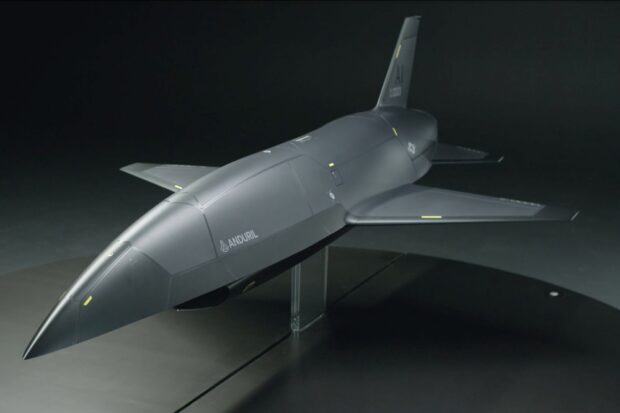The U.S. Air Force has picked Anduril and General Atomics to continue developing their autonomous Collaborative Combat Aircraft concepts over designs offered by Boeing, Lockheed Martin, and Northrop Grumman, the service announced on April 24. In a non-traditional move, the companies that were not picked will still be able to compete to produce the resulting aircraft.
The Department of the Air Force made the decision to continue funding Anduril and General Atomics for detailed designs, manufacture, and testing of production representative test articles under the Collaborative Combat Aircraft program.
The companies not selected to build these production representative CCA vehicles, and execute the flight test program, will continue to be part of the broader industry partner vendor pool consisting of more than 20 companies to compete for future efforts, including future production contracts.
“Just over two years ago, we announced our intent, as part of our Operational Imperatives, to pursue collaborative combat aircraft. Now, following the enactment of the fiscal year 2024 budget, we’re exercising option awards to two companies to construct production representative test articles. The progress we’ve made is a testament to the invaluable collaboration with industry, whose investment alongside the Air Force has propelled this initiative forward. It’s truly encouraging to witness the rapid execution of this program,”
said Secretary of the Air Force Frank Kendall.
The CCA program is part of the Next Generation Air Dominance Family of Systems, which is a DAF effort to equip the force with crewed and uncrewed platforms that can meet the pacing challenge.
“We executed an acquisition and funding strategy for CCA with early operator, technologist, acquirer, and industry teaming to quickly iterate requirements given our fielding timelines. Continuous competition is a cornerstone at every stage of this program. The transparency and teamwork between industry and government really accelerated how quickly we could mature the CCA program,”
Kendall said.
“As we navigate the next phase of CCA development, our collaboration with both current and potential industry partners remains pivotal. Their expertise, innovation, and resources are instrumental in driving this initiative forward, ensuring its success and impact on future operations,”
said Assistant Secretary of the Air Force for Acquisition, Technology, and Logistics Andrew Hunter.
The DAF is on track to make a competitive production decision for the first increment of CCA in fiscal year 2026 and field a fully operational capability before the end of the decade. The DAF’s option exercise decision does not exclude any of the vendors from competing for the future Increment 1 production contract.
“There is no time to waste on business as usual. With the CCA program, Secretary Kendall and the Air Force have embraced a fast-moving, forward-looking approach to field autonomous systems at speed and scale,” said Brian Schimpf, Anduril CEO and Co-Founder. “We are honoured to be selected for this unprecedented opportunity, which signals a demand for continued expansion of the defense industrial base. Anduril is proud to pave the way for other non-traditional defense companies to compete and deliver on large scale programs.”
“Anduril’s work on this program is just beginning,” said Jason Levin, Senior Vice President of Anduril’s Air Dominance & Strike Division. “U.S. and allied success in the future requires CCAs to be delivered at a speed, cost, and scale to beat the pacing threat. We look forward to continuing our partnership with the U.S. Air Force to deliver this critical capability to our Airmen as quickly as possible.”
The DAF is exploring international partnerships, to include potential Foreign Military Sales, as part of the CCA program. These partnerships will help provide further affordable mass at scale while driving horizontal integration and interoperability across our international partnerships.
Planning for CCA Increment 2 development is also ongoing, with initial activities starting later this year. All current and potential future industry partners from the CCA vendor pool will compete for this follow-on effort.
The CCA program aims to deliver at least 1,000 CCAs, prioritizing cost-effective scalability. With air superiority pivotal to America’s military dominance for more than 70 years, CCA offers expanded fighter capacity (affordable mass) at reduced costs and adaptable timelines.
Photo: An image from an Anduril video shows “Fury,” which is designed to accelerate the development, testing, and fielding of mission autonomy into operational reality for the warfighter, delivering an unfair advantage for unrivalled deterrence – Anduril
Source: US Air Force Press Release; Air & Space Forces;

